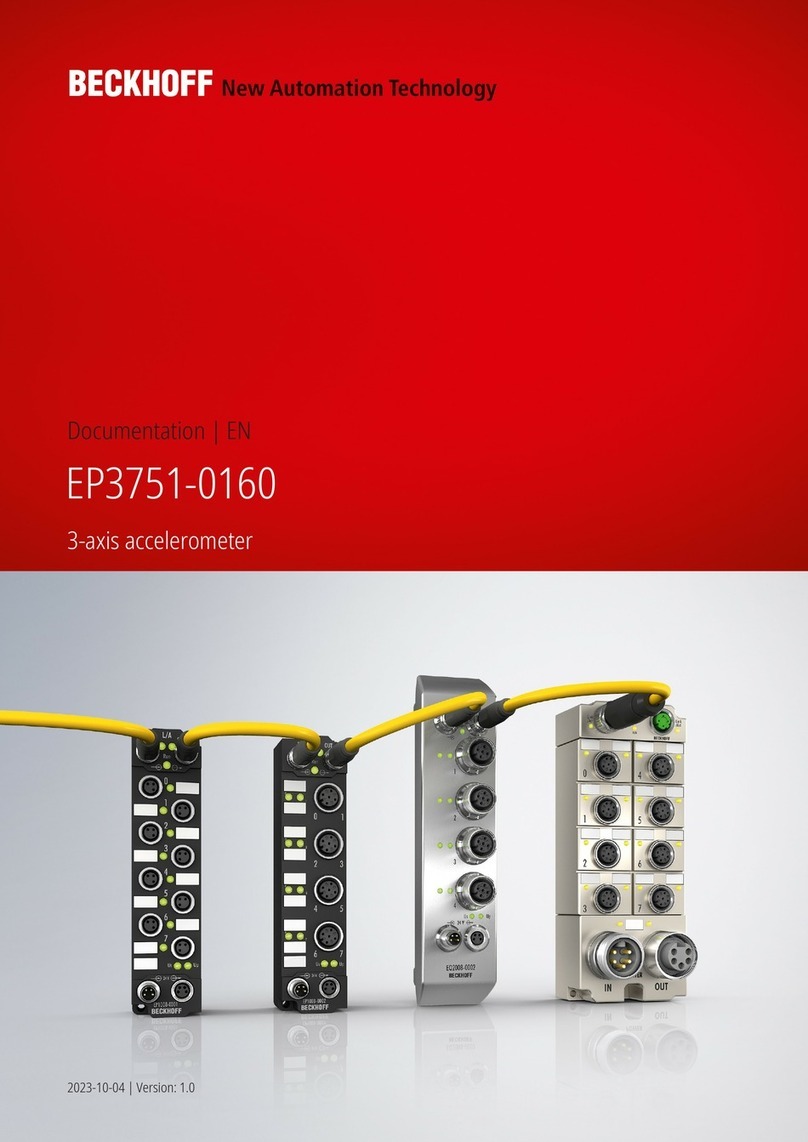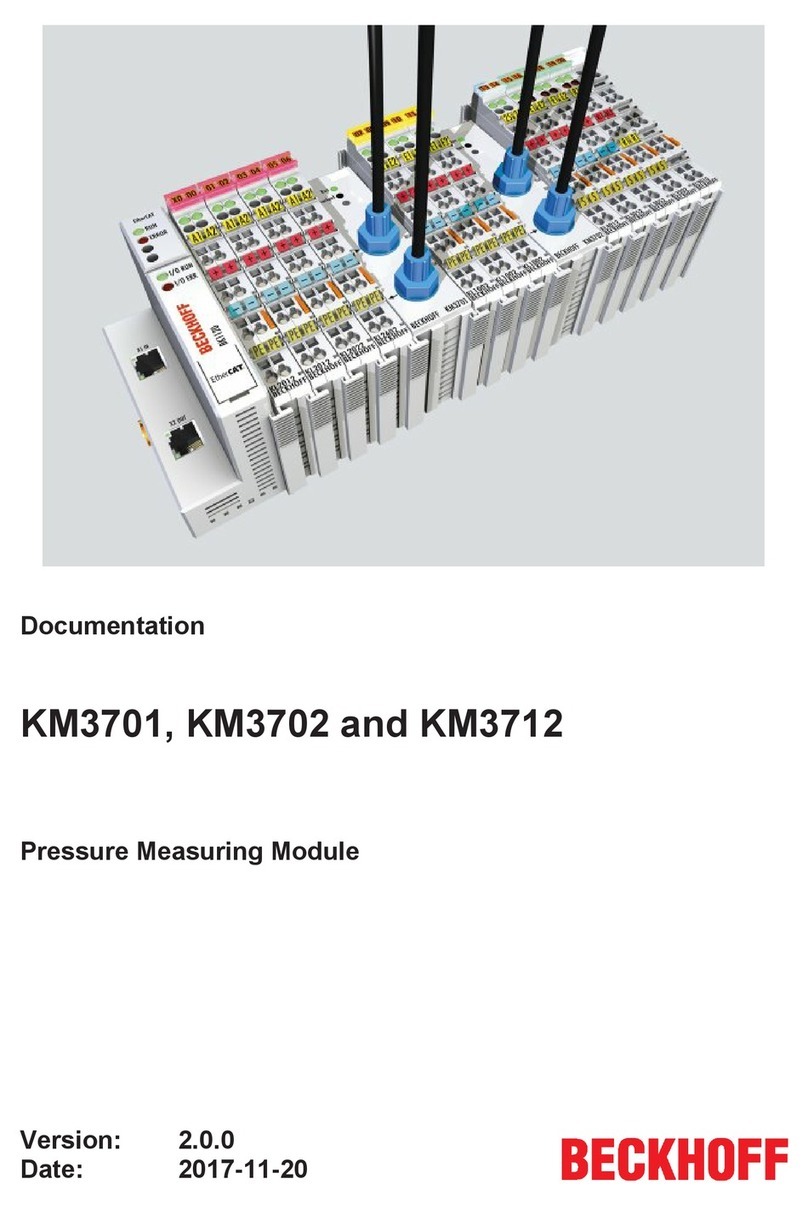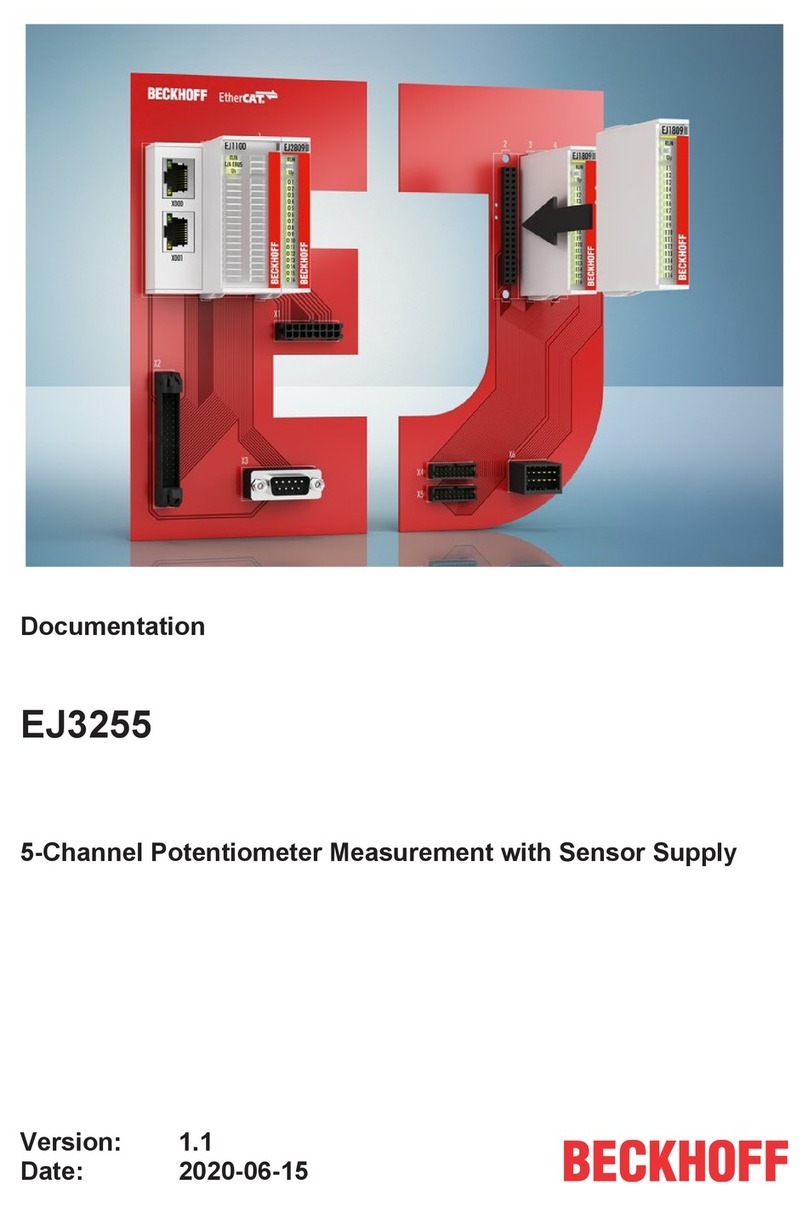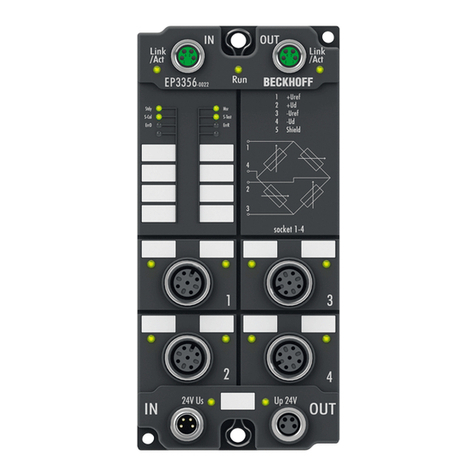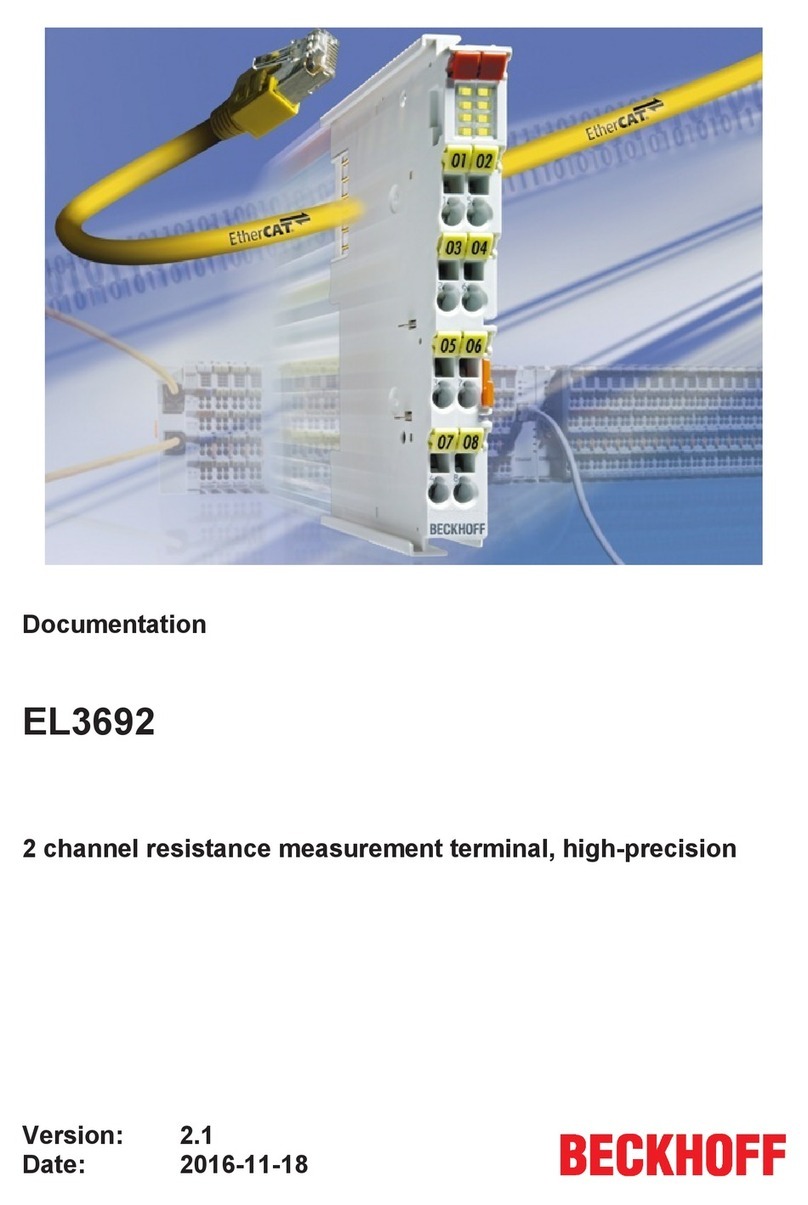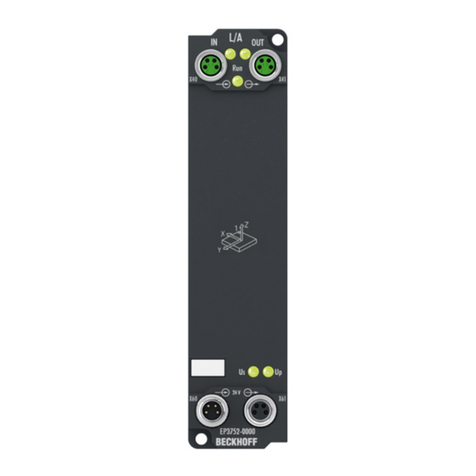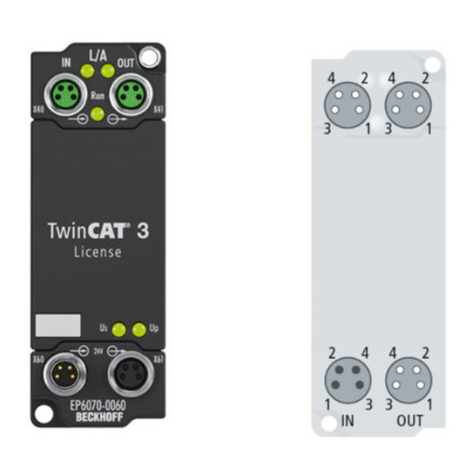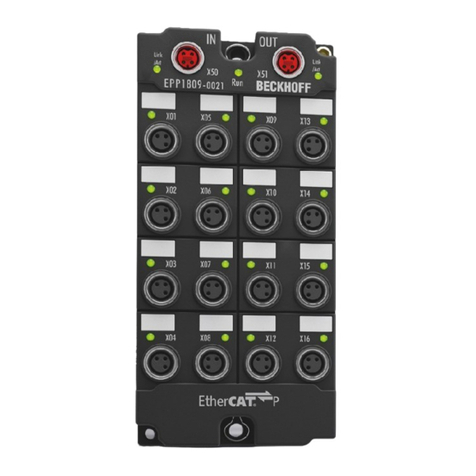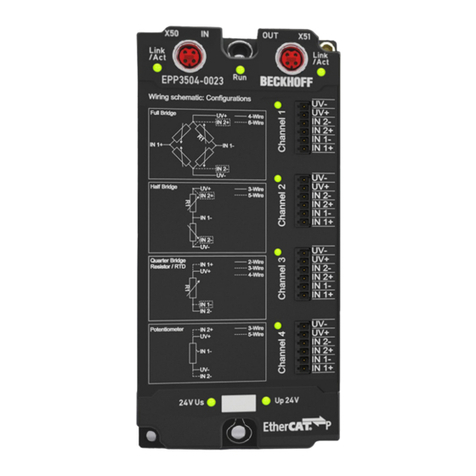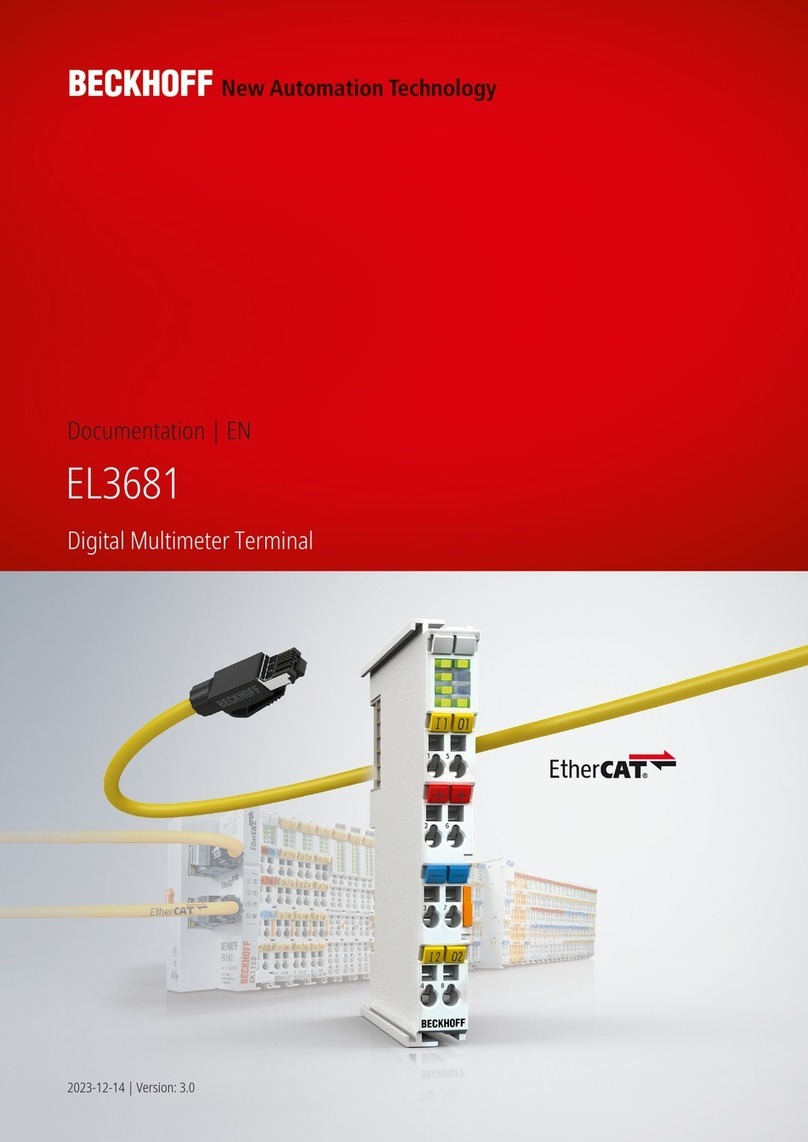
Table of contents
EL36924 Version: 3.1
5.2 TwinCAT Development Environment ..............................................................................................80
5.2.1 Installation of the TwinCAT real-time driver ..................................................................... 81
5.2.2 Notes regarding ESI device description ........................................................................... 87
5.2.3 TwinCAT ESI Updater......................................................................................................91
5.2.4 Distinction between Online and Offline ............................................................................ 91
5.2.5 OFFLINE configuration creation....................................................................................... 92
5.2.6 ONLINE configuration creation ........................................................................................ 97
5.2.7 EtherCAT subscriber configuration ................................................................................ 105
5.3 General Commissioning Instructions for an EtherCAT Slave .......................................................114
5.4 Notices on analog specifications...................................................................................................122
5.4.1 Full scale value (FSV), output end value ....................................................................... 122
5.4.2 Measurement error/measurement deviation/measurement uncertainty, output uncertainty
.......................................................................................................................................123
5.4.3 Temperature coefficient tK [ppm/K]................................................................................ 124
5.4.4 Long-term use ................................................................................................................ 125
5.4.5 Ground reference: single-ended/differential typification.................................................126
5.4.6 Common-mode voltage and reference ground (based on differential inputs) ................ 131
5.4.7 Dielectric strength .......................................................................................................... 132
5.4.8 Temporal aspects of analog/digital or digital/analog conversion.................................... 133
5.4.9 Explanation of the term GND/Ground ............................................................................ 136
5.4.10 Sampling type: Simultaneous vs. multiplexed................................................................138
5.5 Quick start .....................................................................................................................................141
5.6 Operating behavior, diagnostics....................................................................................................144
5.6.1 Control............................................................................................................................ 144
5.6.2 Basic operation .............................................................................................................. 144
5.6.3 Default state ................................................................................................................... 144
5.6.4 Process data .................................................................................................................. 144
5.6.5 4/2-wire mode ................................................................................................................ 144
5.6.6 Measuring mode ............................................................................................................ 145
5.6.7 Autorange function ......................................................................................................... 146
5.6.8 Filter ...............................................................................................................................146
5.6.9 Conversion time ............................................................................................................. 147
5.6.10 Error Codes....................................................................................................................148
5.7 Process data .................................................................................................................................149
5.8 Specific data..................................................................................................................................153
5.8.1 Measuring currents and voltages ................................................................................... 153
5.8.2 Capacitive and inductive influences ............................................................................... 153
5.8.3 Heating of the test specimen.......................................................................................... 153
5.8.4 Calculating the resistance value .................................................................................... 154
5.8.5 Error analysis ................................................................................................................. 155
5.8.6 Resolution ......................................................................................................................156
5.9 Data processing ............................................................................................................................157
5.10 DC operation mode .......................................................................................................................160
5.11 Example program..........................................................................................................................161
5.12 CoE ...............................................................................................................................................165
5.12.1 Most important CoE entries............................................................................................165
